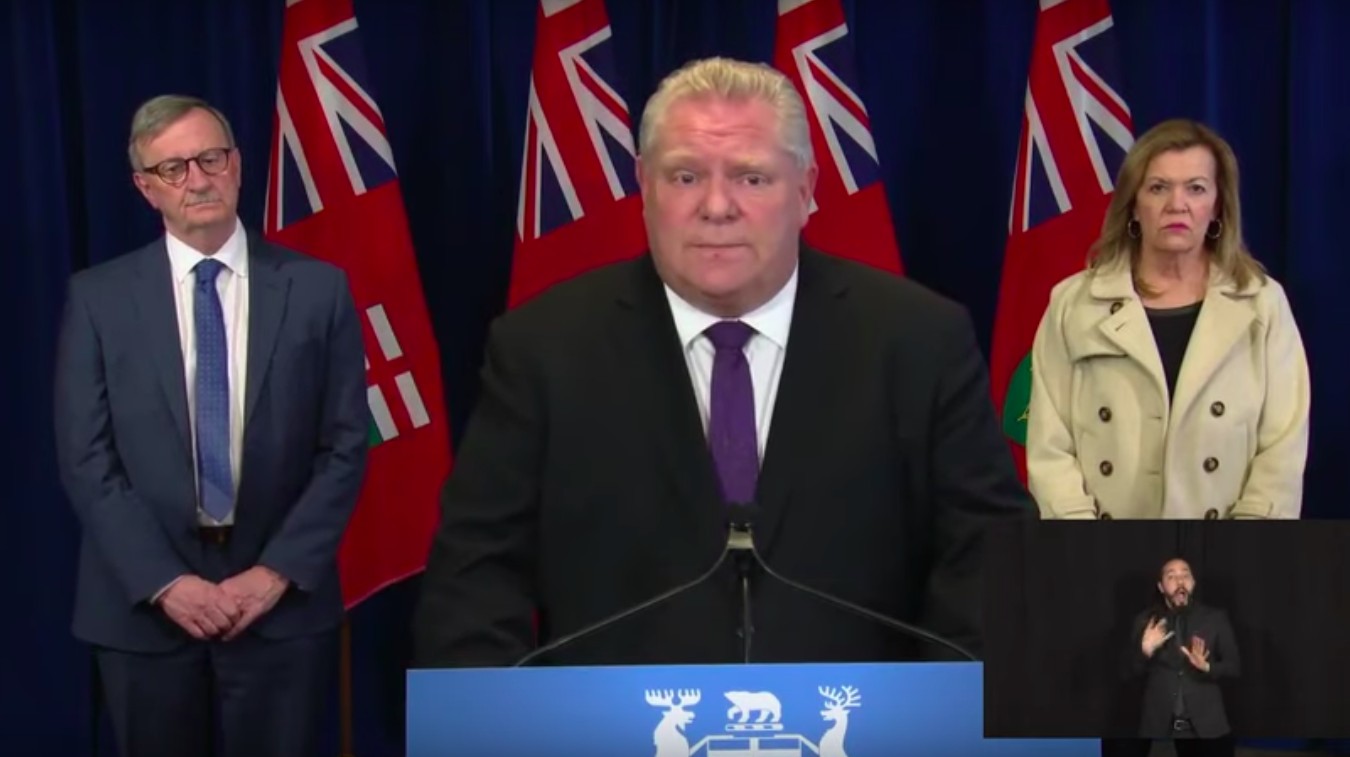
If province moves to a lockdown, this is what it could mean for you
Projections and modelling released by the Government of Ontario show the devastating impact COVID-19 could have on the province. Data shared with the public Friday reveals that, with current levels of social and physical distancing restrictions in place, 1,600 people could die from the virus by April 30 in Ontario.
According to the models, without any government intervention, COVID-19 would have killed 6,000 Ontarians by the end of the month. With a “full future intervention,” deaths can be kept as low as 200, under what the province is describing as “stricter measures."
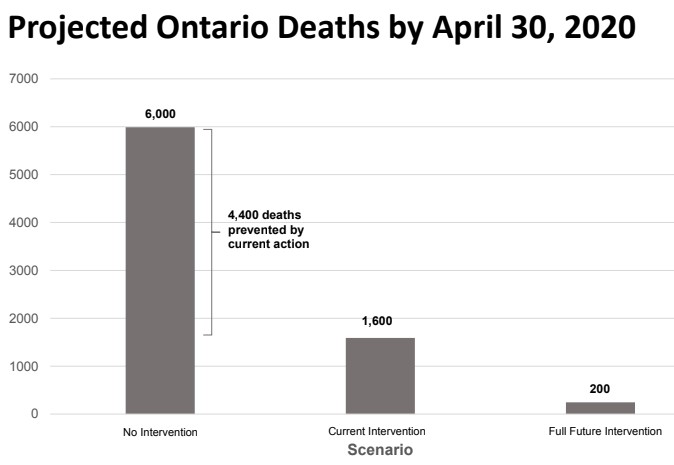
Across the length of the pandemic, which could last at least 18 months, projected deaths in Ontario range from 3,000 to 15,000, with “current intervention.” Were the province to not have mandated the closure of non-essential businesses, amongst other intervention measures, 300,000 people could have been infected with COVID-19 by April 30. According to the modelling, measures already in place will eventually reduce the case number across Ontario by 220,000 out to the end of April.
Put simply, the stricter the measures, the lower the case and death count Ontario can expect.
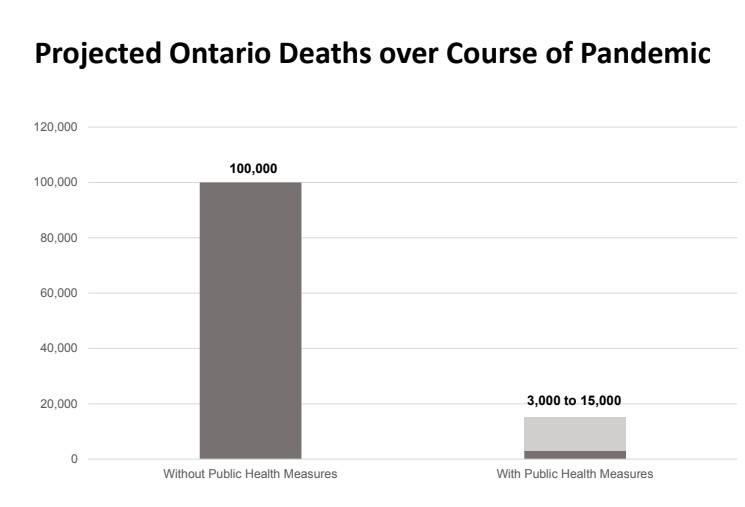
So far, Premier Doug Ford and Prime Minister Justin Trudeau have stopped short of implementing a full lockdown. The provincial and federal leaders started by asking nicely for people to play their part and then moved to pleading. Eventually, some measures were introduced, but not on the scale that has been seen in Europe and in other parts of the world.
In Ontario, a ban on gatherings of more than five people and a codified list of “essential” businesses are among the strictest measures announced so far. An order to self-quarantine for 14 days after returning from abroad, with the threat of stiff fines or even jail time if the order is not followed, was the harshest directive from the federal government.
At the local level, cities (including Mississauga and Brampton) have passed their own bylaws to fine individuals not observing physical distancing, but that is not yet a universal rule.
Now, with the possibility of 1,600 deaths by the end of the month if things don’t change, pressure is rapidly building for the province to implement significantly stricter measures. Exactly how that would work and what they might look like depends on a number of factors.
Around the world, stricter measures and lockdowns have varied.
In France, the restrictions are near-total. Just one day after imposing a lockdown, on March 17, the French government drew up a form for individuals to fill out justifying a reason for leaving the house. The measure is more than simply a scare tactic, with 5.8 million checks carried out and 359,000 fines issued so far, according to media reports.
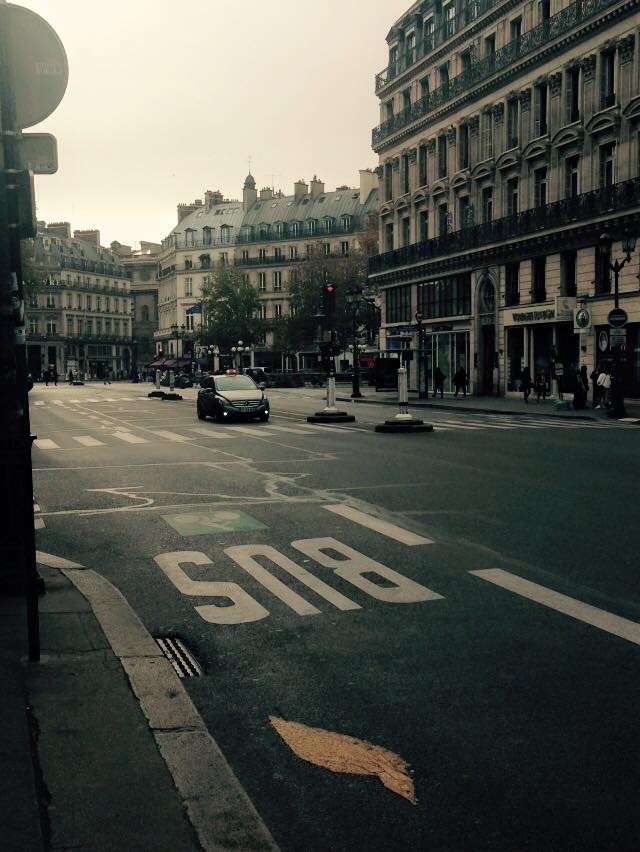
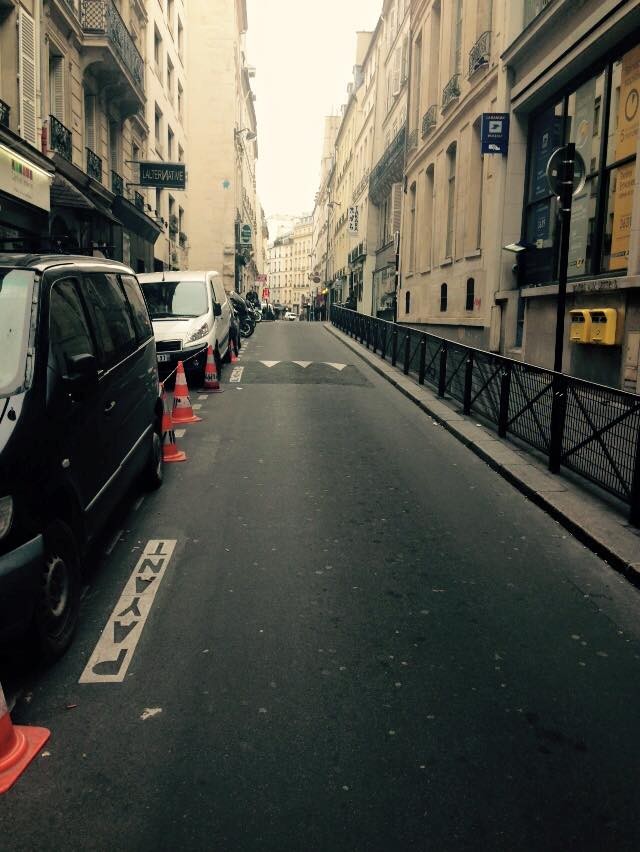
The usually busy streets of Paris are nearly empty after France enacted a complete lockdown on March 17.
Across the English Channel, Britain entered a lockdown on March 24, with people told to only leave their homes for very specific reasons. Prime Minister Boris Johnson, who has tested positive for COVID-19 himself, told the country to limit grocery store trips to once per week and said only essential workers should leave the house for work. Citizens were told to limit exercise to one walk outside per day.
While legislation lays out fines and charges for breaking COVID-19 rules, Britain does not operate the same paperwork system as France. As a result, it remains unclear how rules such as the one walk per day policy can be enforced.
Turkey has gone as far as shutting the borders between its cities and imposing a partial curfew on citizens under the age of 20.
The north of Italy shutdown in early March before the whole country followed suit. Heartwarming videos shared across social media have shown Italians singing together from across their balconies, not allowed to leave their homes even for a walk.
Spain has deployed more than 1,000 troops to help police the government’s order to stay home.
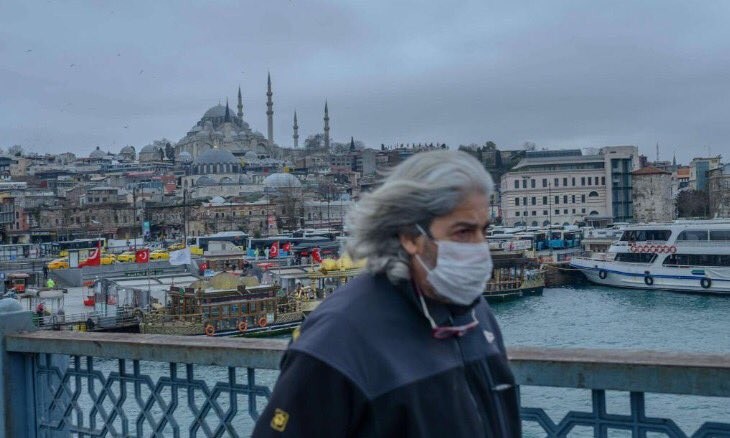
Turkey has shutdown borders between cities, like Ankara pictured above, and imposed a partial curfew on citizens under the age of 20.
“I hope not,” Premier Ford said on Friday, when asked if he would roll out stricter measures to keep Ontarians inside and slow the spread of COVID-19. “I have confidence in the 14.5 million people in the province. If this [projection] doesn’t give a wake up call to people, I don’t know what does. I think it’s the responsibility of everyone in this province that they follow the protocol.”
Asked later in the conference about further restricting personal mobility including travel within the province, Ford said everything “is on the table.” The Premier stopped short of giving details, asking in rhetorical exasperation how he and the province could implement and police a strict order to stay home.
Instead, the provincial government is following the strategy it has been pursuing for some time. Rather than limiting personal freedoms and forcing people to stay home, Ontario’s list of essential businesses is aimed at shutting down public life and taking away any reason for residents to leave their homes.
On Friday, the list of essential businesses dropped from 74 to 44, cutting out a variety of previous inclusions. Most notable, was the end of industrial construction, with only healthcare, transit and residential projects allowed to continue, under a very strict inspection regime. No new residential construction will begin.
The list still includes businesses some might not consider essential, but the government says they are key to keeping required services functioning. Businesses allowed to stay open range from health work and transit. Stores selling office supplies, hardware or items for pets have been told to switch to delivery or curb side pick-up except in “exceptional circumstances.”
The full list can be viewed here.
“With today’s closures we’ve told the vast majority of Ontario’s workforce to stay home,” Ford said. “We’ve had to shut down most of our economy.”
In light of the government’s shocking projections, it seems inevitable tighter rules will have to be implemented eventually. Around the world, politicians have stood in Doug Ford’s shoes, choosing not to implement stricter measures. Days later, they have been forced to change their minds.
In Britain, for example, limits have been put on the freedom of vehicle owners. Residents are allowed to drive to essential workplaces or to shop, but not to country trails or walks away from their homes. The rules were introduced to spare the health service from the additional strain of people suffering road-traffic collisions. Whether such measures would work in Canada or not, particularly in sprawling cities like Mississauga and Brampton, remains to be seen.
Ford urged people not to travel to cottages, in part because grocers in those areas can’t service the local population and also because smaller, remote healthcare systems are not designed to accommodate the swelling cottage-country population, as many flee cities to hunker down elsewhere.
Ontario will likely keep grocery stores and pharmacies on the list of essential businesses, but could limit residents to one trip per week to the store and the number of people allowed inside. Services such as Instacart could be used to move entirely to delivery for groceries. This could keep residents inside and limit community spread, but would be a drastic change from how Ontarians currently live and how grocery business models operate.
Ford said retailers have ratcheted up their online operations to make as many deliveries as possible.
What is truly essential is a difficult question. For now, financial services, gas stations and a host of other places are on the essential business list. Most are not needed in person by the average person whose duty is to stay home, but for frontline workers, travelling to work everyday, things like gas stations, public transit and even car mechanics are critical.
Unless the province is able to devise a system to offer gas or transit specifically to key workers, such places are likely to keep the lights on.
Supply chains, including all kinds of businesses, are also vital to how Ontario currently operates. Ford went as far as to conjure up images of anarchy in his Friday press conference if issues of supply were to become a real problem.
On the list of essential businesses, supply chains are defined as: “Businesses that supply other essential businesses or essential services within Ontario [...] with the support, products, supplies, systems, or services, including processing, packaging, warehousing, distribution, delivery, and maintenance necessary to operate.”
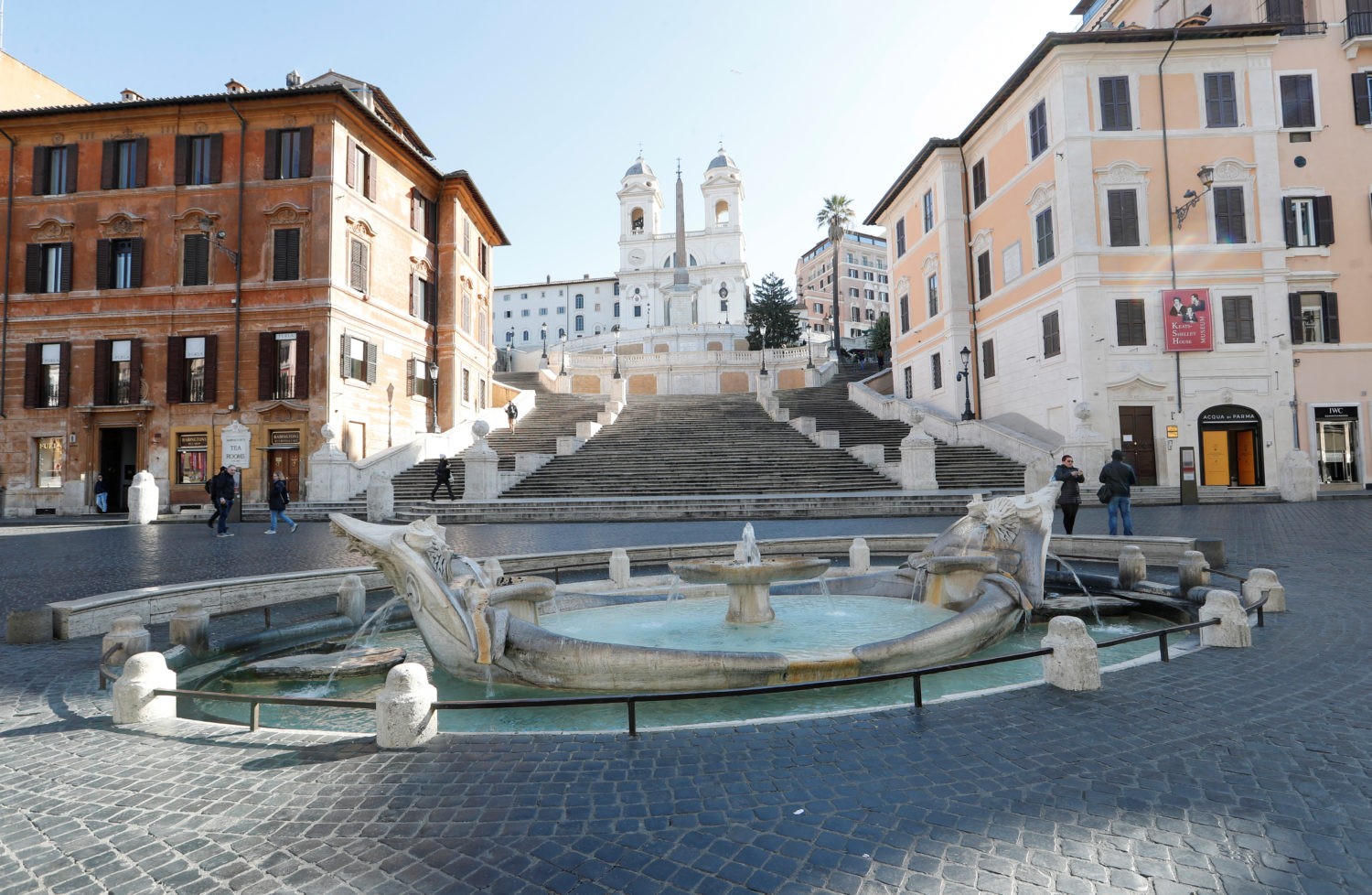
Italian cities still have a ghostly feel
European countries have proved there is no limit to what steps can be taken in the face of the COVID-19 pandemic. From Turkey’s curfew on young people through to France’s requirement of paperwork whenever leaving the home, there are a range of options.
The question: how many is the province comfortable with and how do you enact rules that are next to impossible to enforce?
The impact of stricter measures on individuals would be varied and, arguably, based on privilege. For those in Mississauga and Brampton who own a single-detached house with a garden, even the strictest measures would likely allow them outside in their own backyard. Those living in apartments, on the other hand, would be forced to stay inside and have their movements restricted further. In Peel, this could create a disparity that would play out based on circumstance.
On Friday, almost immediately after the release of the province’s stark projections, Ford held back from further limiting individual freedoms. The Premier continued to pursue the province’s strategy of shutting down public life, economic activity and group gatherings, largely through voluntary cooperation, hoping Ontarians will comply on their own.
Asked what his breaking point would be and when he would crackdown with stricter measures, Ford did not answer.
However, if this weekend sees residents breaking the rules and outside in groups, stricter measures seem inevitable. As the window to flatten the curve and drop the number of deaths by April 30 from 1,600 to 200 closes, a lack of compliance from residents will surely force the premier’s hand.
Email: [email protected]
Twitter: @isaaccallan
Tel: 647-561-4879
COVID-19 is impacting all Canadians. At a time when vital public information is needed by everyone, The Pointer has taken down our paywall on all stories relating to the pandemic to ensure every resident of Brampton and Mississauga has access to the facts. For those who are able, we encourage you to consider a subscription. This will help us report on important public interest issues the community needs to know about now more than ever. You can register for a 30-day free trial HERE. Thereafter, The Pointer will charge $10 a month and you can cancel any time right on the website. Thank you.
Submit a correction about this story


